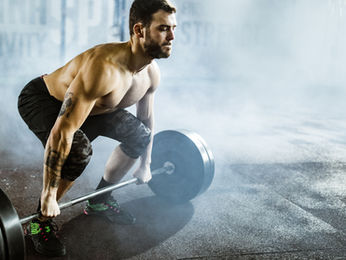

Knee OA Risk Reduces With Return to Pivoting Sports
There isn't a typo in this post. You are reading it correctly.. This research from Haberfield et al 2021 is also consistent with Oiestad...
Mick Hughes
Sep 8, 2021


Does Fatigue Influence ACL Injury Risk?
This question is a nice topic of debate between researchers & clinicians. A recent review by Bourne et al (2019) showed that there is no...
Mick Hughes
Sep 8, 2021


Hop Test Benchmarks
It wasnt the main purpose of the study, but van Melick et al (2019) reported some nice benchmarks for young, male ACLR patients to strive...
Mick Hughes
Sep 7, 2021


Rate of Force Development for ACL Rehab
RFD refers to the ability to produce force quickly and is integral during ACLR rehab - yet is often not trained well enough. It's been...
Mick Hughes
Sep 7, 2021


Return to Running Following ACL Reconstruction
Running is a major milestone to achieve for patients following ACL surgery - yet there's still no perfect answer as to "when"....
Mick Hughes
Sep 7, 2021


Return to Sport Following ACL Reconstruction
It's widely accepted now that passing criteria before returning to sport following ACLR is best practice and is associated with better...
Mick Hughes
Sep 7, 2021


Adductor Squeeze Test for Groin Injury
A great quick screen you can use to assess function in your athletes with adductor-related or hip-related groin pain. Red light: The...
Mick Hughes
Sep 7, 2021


Return to Training Following ACL Reconstruction
We often talk about setting benchmarks for return to running and return to sport for the ACLR athlete; but it can be a bit more...
Mick Hughes
Sep 7, 2021


Managing Expectations Following ACL Injury
It's important that we are having honest discussions with our ACLR patients about what the chances are of them returning to pre-injury...
Mick Hughes
Sep 7, 2021


Blood Flow Restriction for ACLR Rehab
A great research paper by Hughes and his colleagues. This was a study that directly compared heavy load resistance training with BFR...
Mick Hughes
Sep 7, 2021






































